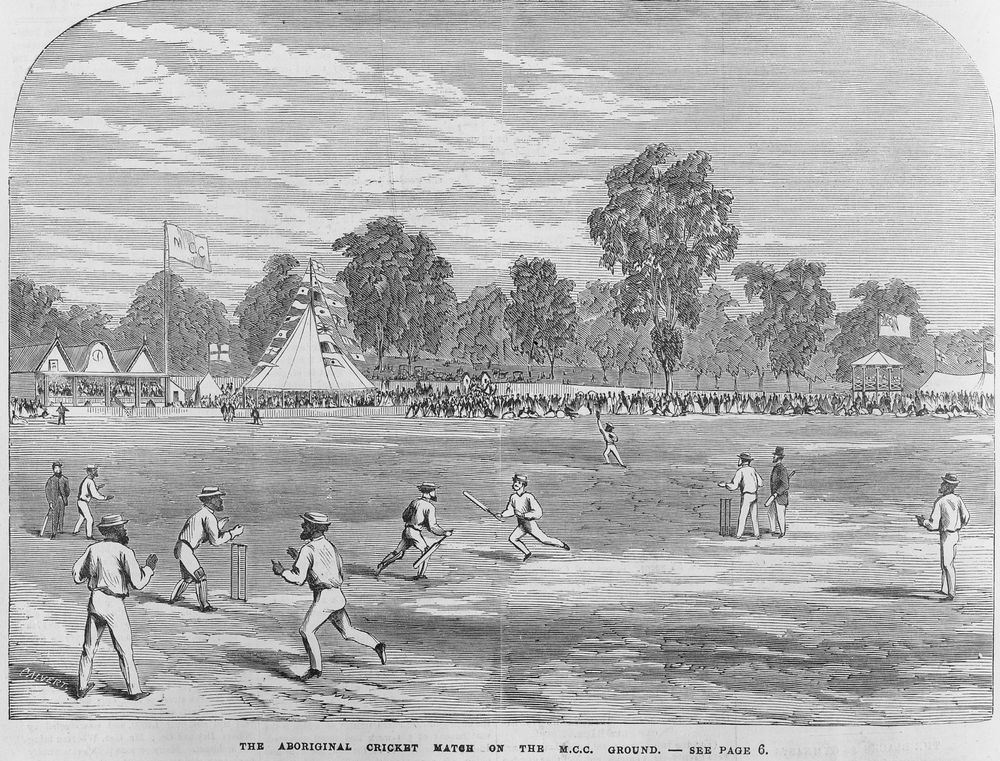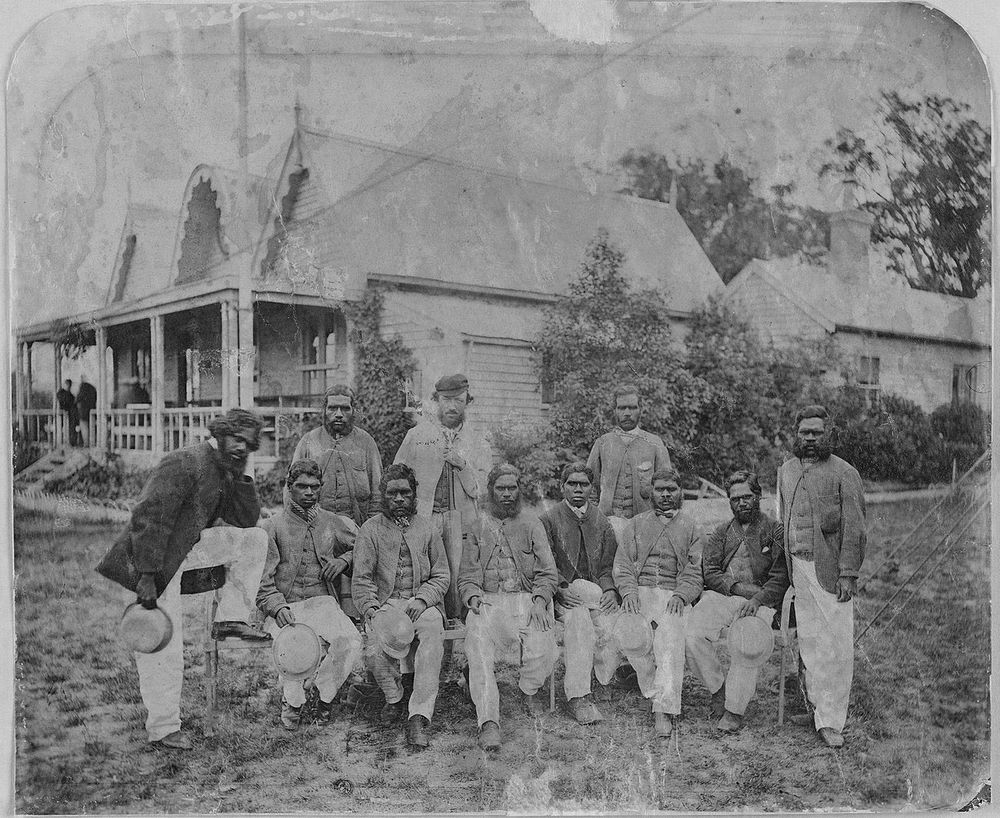Sports has been an important way to bridge different cultures.
For the aboriginal Australians and their colonial settlers, it was cricket.
The game came to Melbourne around 1838 with the formation of the Melbourne Cricket Club.

Cricket matches regularly took place on cattle stations where aboriginals were employed as stockmen.
Cricket was also used as a way of civilising the aboriginal people and introducing them to white values.
The first Australian cricket team touring England.

On Boxing day 1866, a crowd of over 10,000 spectators turned up at the Melbourne Cricket Ground.
Although the aboriginals lost against the MCCs reinforced team, the aboriginal players won unanimous praise for their performance.
The team subsequently toured Victoria where they showed marked improvement under Wills guidance.

In February 1867, Wills and his team went to Sydney to begin an intercolonial and overseas tour.
With the help of new financial backers, Lawrence prepared a team for an overseas tour of England.
The team left Sydney in February 1868, arriving in London in May.

This was the first time an organized group of Australian sportspeople had travelled to England.
The first match was played at The Oval, London, on 25 May and it attracted 20,000 spectators.
Many of these spectators attended out of curiosity, rather than to savor a cricket contest.

After the publication of Charles Darwin’sThe Origin of Speciesin 1859, there was much fascination for exotic races.
The players were on the field a staggering 99 days out of 126 they were on tour.
The Australians surprised their competitors by winning 14, losing 14 and drawing 19 of their 47 matches.
Some of the players showed great sporting prowess.
He also achieved four stumpings while playing as wicketkeeper.
The tour was struck by one serious tragedy.
His condition quickly worsened and he died.
He was suspected to have been suffering from tuberculosis and pneumonia.
Financially, the tour was a success, officially netting a total profit of 2,176.
The players were promised a salary of 50 each, which were to be paid when they returned home.
Although the team members received accommodation and travel expenses, none of the aboriginal players received payments.
This made it difficult for indigenous cricket players to continue playing competitive cricket.
In 1996, Jason Gillespie became the first aboriginal player to represent Australia in Test cricket.